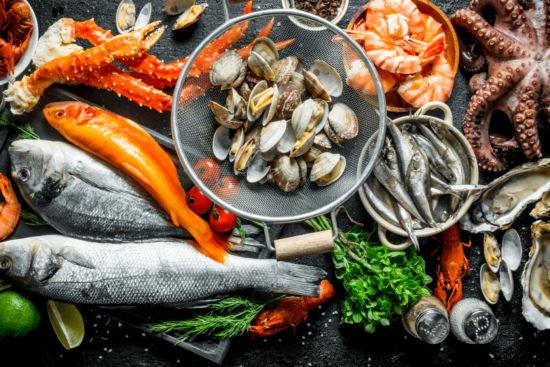Safer Fish and Shellfish Purchasing Practices

Shellfish and fish are two of the most popular delicacies on many restaurant menus. As a restaurant owner, you want to make sure that the selections you provide to your customers are at peak freshness and the highest quality possible.
When purchasing seafood for your establishment, make sure to follow these practices that can mitigate the risk of foodborne illness and ensure greater quality with each seafood platter you serve.
Never Keep Shellfish With Cracked Shells
Shellfish should always be alive when you purchase them. Dead shellfish contain deteriorated meat that can increase the odds of foodborne illness, infectious disease, and other health complications.
Mussels, oysters, or clams that have cracked or broken shells are likely dead and pose a massive gamble when cooking them in your dishes.
Tap Your Shellfish Before Purchasing
Unfortunately, even shellfish that don’t have cracks in their shells can still be dead on arrival at the market. One way to successfully determine the freshness of your shellfish is the tried and true tapping method.
In order to ensure that your oysters, clams, and mussels are alive upon purchase, tap the open shells. If the shellfish are alive they will close their shells after you’ve tapped. If they don’t close, they are dead and should be passed up for your menu.
Only Buy Live Crabs and Lobsters
Even bigger seafood items like crabs and lobsters are specimens that must be purchased live for maximum freshness. Check for leg movement in any lobster or crab you purchase from a vendor. Both of these meats spoil quickly after death and pose a health risk to people that consume their spoiled meat.
Freshness is More Than the Color of a Fish’s Meat
Many people believe that color is a massive indicator of freshness when it comes to purchasing fish meat. The truth is that there are several external factors that could influence the color of fish meat without tainting its quality and freshness.
However, if the meat looks slimy, thick, and slippery, it’s not a cut you want to select. It’s also helpful to push against the meat of the fish. If it springs back quickly and is firm, it’s a fresh piece of meat.
Freshness Lies in the Eyes
Looking into your fish’s eyes also indicates the freshness of the catch. If a fish’s eyes are shiny and clear, it’s safe to say the meat is fresh.
Use Smell Over Sight to Determine Freshness
Finally, although you may think that fish is supposed to smell “fishy,” fresh fish definitely shouldn’t have this quality. If you sniff the meat and catch an air of fishiness or ammonia, move on to a different selection.
Keep All of Your Purchases Fresher With Certified On The Fly
Regardless of your menu items, you always want to ensure that everything your purchase for your restaurant is fresh. For more tips on quality checks, proper food handling, and food storage, your best option may be to get food handler certified.
Certified On The Fly is an affordable online course that simplifies the food handler certification process. You take the course on your time, so studying and testing should never interfere with your daily shifts. Register online today to start the certification process today, with Certified On The Fly.
Back to Blog